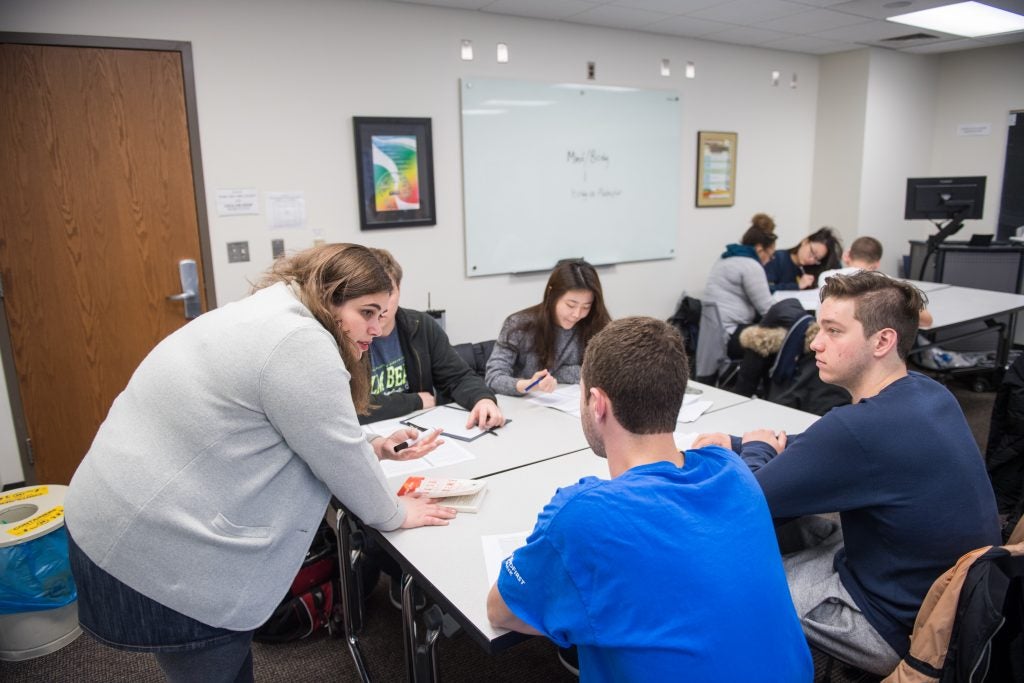

Teaching Philosophy:
I believe that teaching is fundamentally about connection. Everything I do inside and outside of the classroom reflects this basic goal: to teach students how to connect to what they are learning and who they are learning with. Understanding who you are and how you relate to the people and ideas around you is essential to connecting.
Academic Writing & Composition, Gender & Identity:
As an instructor of First Year Writing, I learned that these identity oriented goals and those of academic writing go hand in hand. In academic writing, we teach how to relate our own opinions, ideas and experiences to a wider audience. Through this process, students learn how to undo absolutes, generalizations and opinion-based language and are pushed instead to seek evidence and argument, which enable dialogue with others. Learning to do this means learning to expect others to differ from you and how to handle these differences between self and other. When I teach, I am not only teaching writing and thinking, but how to exist in social space, both in my classroom and beyond it.
Extending the Classroom via Technology:
I created Instagram for the Extended Classroom as a way to break down barriers between my students’ intuitive forms of publishing and academic writing. The project encourages my students to take our class with them as they go about their day and to share some of their world back with us by tying it back to the themes of the class. In doing so, my students are able to learn on the go, and to connect what we learn in school to their everyday environments. This also creates a virtual community for the students to engage in, learning to learn through their most intuitive forms of engagement. By teaching through technology rather than against it, I encourage my students to be thoughtful, engaged and critical media users and consumers.
Course Samples:
Learning Spaces, Learned Bodies | Fall 2015, Winter 2016, Spring 2016
This is a first year writing course on the relationship between the body, space and education. In this class we will learn about how the body shapes our learning environment, and how to use both space and the body as categories of educational analysis. While education is often thought of as a purely mental activity, we will pay close attention to the role that these social and material forces play in the formation of knowledge, and how our own educational experiences are foregrounded through them. We will look at how bodies form space and how space in turn shapes the body, persistently asking how these objects intersect but also come apart, through categories like gender, ability, architecture and design. How do the history, materiality, and social identity of a body orient how it learns in a particular environment? How does the role of the body shift between a classroom, a football field, a hospital and a maker space? And how do both the body and space become entangled with and form, “the mind”? As an introductory course to comparative literature, we will approach the body and space as interdisciplinary objects, using a variety of methods and sources from across different time periods, cultures and media. As a first year writing course, we will develop the basic critical writing skills that you will use throughout your time at the University of Michigan and beyond.
Holy Texts in the Age of Texting: Technologies of Writing Religiously | Fall 2018
What do religious and digital texts have in common? This course will explore this question by engaging the mechanics of reading and writing across differently sacred texts and their various mediums. We will interrogate surprising relationships between old and new ways of writing, like prophets and social media influencers, and between religious and secular forms of publication, like what authorship means for a divine text and a Facebook thread, and of course their overlap (cue: “The Writing on the Wall”). We will also pay attention to how changing technologies of inscription both activate and change our writing sensibilities, and ask ourselves how we, as writers in a contemporary world, can think through, critique and utilize those shifting sensibilities to write more robustly and dynamically. We will take a trans-genre and trans-historical approach to studying writing, spanning from the ancient to the contemporary and the Talmud to Instagram, exploring the different ways that authors create narrative, gather evidence, structure arguments and persuade readers. We will consider comparative frameworks such as the relationship between various nonhuman writers, like divinities and social media bots, and different kinds of human writers, like prophets and poets, scholars and bloggers, looking to understand how these different actors and activities shift our definitions of both “writing” and “writer”. This class will be interesting to anyone looking to explore writing through questions of religious authority, truth, subjectivity, creativity and the secular in the modern digital age.
